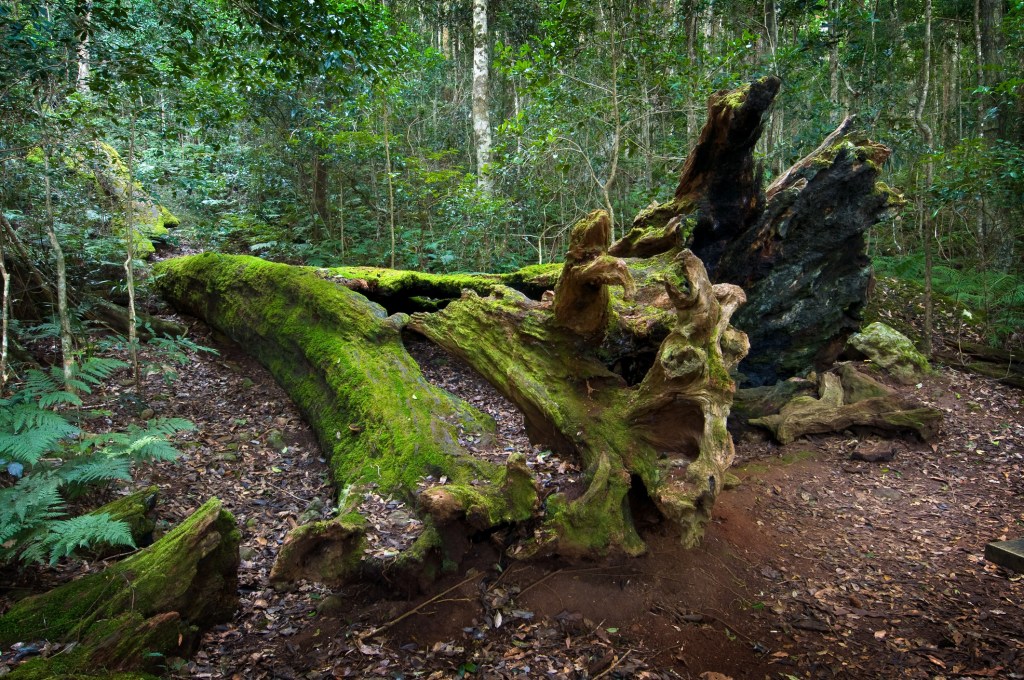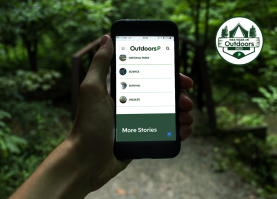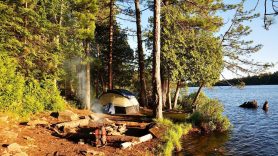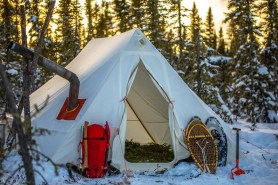

As a survivalist and adventurer, one of Bear Grylls’s most important, most-used skill is his ability to find or build a shelter in different environments. This is especially true in thick forests or jungle, when getting shelter from the elements is vital. You may need protection from heat, cold, rain, dangerous animals, and other hazards.
Videos by Outdoors with Bear Grylls
Even if you’re focused on searching for water and food, to have enough energy, it’s important to keep warm and dry and rested, so having a proper shelter should be a priority in your survival plan.
“Fatigue leads to bad decisions, which result in a rapid physical and mental decline,” says Bear in his book Born Survivor. “As much as anything else, a place you call ‘home’, however humble, will be a major psychological boost.”
Figure Out Where
This is the first thing to decide – making sure you are not wasting energy building your shelter in the wrong place. Take time to study the terrain in daylight. Look for higher ground, away from water to avoid a soaking during a downpour or getting flooded by groundwater. Also build it away from established animal routes to water sources.

Generally, Take into consideration:
- Your shelter should have protection from the elements – for example the sun, rain, wind, or temperature extremes
- You want to be away from hazards like water, wild animals (look out for animal tracks), and swarms of insects
- Avoid grassy areas and make sure there are no ants. “Ants work 24 hours of every day and night of the year, and when a colony of ants is on the move, they clear everything in their path – make sure it is not your camp,” says Bear
- Scan the trees above to confirm that nothing there will fall on you – avoid things like dead branches (Bear says that dead wood is often dislodged by curious monkeys), falling coconuts and leeches (yes, they can live in trees!)
Next, Figure Out Your Materials
The good news is that a jungle or forest has a lot of native material you can use to construct your shelter. You will find young saplings which bend easily, bamboo of all sizes, and climbing vines to use as “rope” (remember how Tarzan got around?) – all of which will aid in your build. Large leaves can be used for thatching a roof or making walls, while soft material like moss is great padding for a bed. “A platform of wood or bamboo lined with softer palms or leaves on top is an easy first option for hasty shelters,” says Bear. “But a raised platform is better and will provide protection from the jungle floor.”
Bear has made simple shelters with just vines, branches, and leaves, but if you have any other materials like plastic sheeting, or cord, these will be useful too.

Decide Which Kind of Shelter to Build
Lean-to
“I have often used this type of shelter in the jungle and it’s the easiest type to construct,” says Bear. “It is simple and in the world of survival, simple wins every time.”
Lash a log to a tree at shoulder height, letting the other end rest on the ground. Move two meters away and lash another length of wood to another tree. Then make a crossbar between these and weave in smaller pieces of wood. Drape large leaves across the top. Make a raised bed inside with bamboo or pieces of wood, lined with soft leaves.
Sheet Shelter
Tie a cord or vine between two trees – or push some upright saplings into the ground and tie the cord between these. Then drape a tarp or sheet over the cord, keeping some of the material on the ground for under-bed protection, weighed down with heavy stones. Tie the other corners to stakes pushed into the ground. This shelter will give protection from rain and also allow air to circulate.
Fallen-tree Shelter
Clear the ground around a fallen tree trunk and sleep on its sheltered side. You can make a small depression along the trunk, and dig a run-off ditch to divert any rainwater.
You can also excavate the rotting wood of a large fallen tree to make a good shelter. Check first for snakes or scorpions, who might have found this cozy home before you.
A-frame Shelter
Lash two poles together into an upside-down V shape, and place them with the pointy side up. Then do this again and put another pole between the tips upside-down Vs to connect the sides. You can make a sleeping platform by weaving plant material between two more poles and lashing these halfway up the A-frames. If you have a tarp, drape this over your crossbar top to make a roof, or make a roof by leaning branches against the A-frame and adding foliage.
Bear Tip: “The best wood to collect is found hanging from branches and bushes just off the ground – it’s drier than the damp wood on the jingle floor,” says Bear.
More from Bear Grylls:
- How to Navigate without a Compass
- How to Move Across Ice
- Bitten By a Snake? Here’s What to do
- How Bear Grylls Survives Sub-Zero Temperatures









